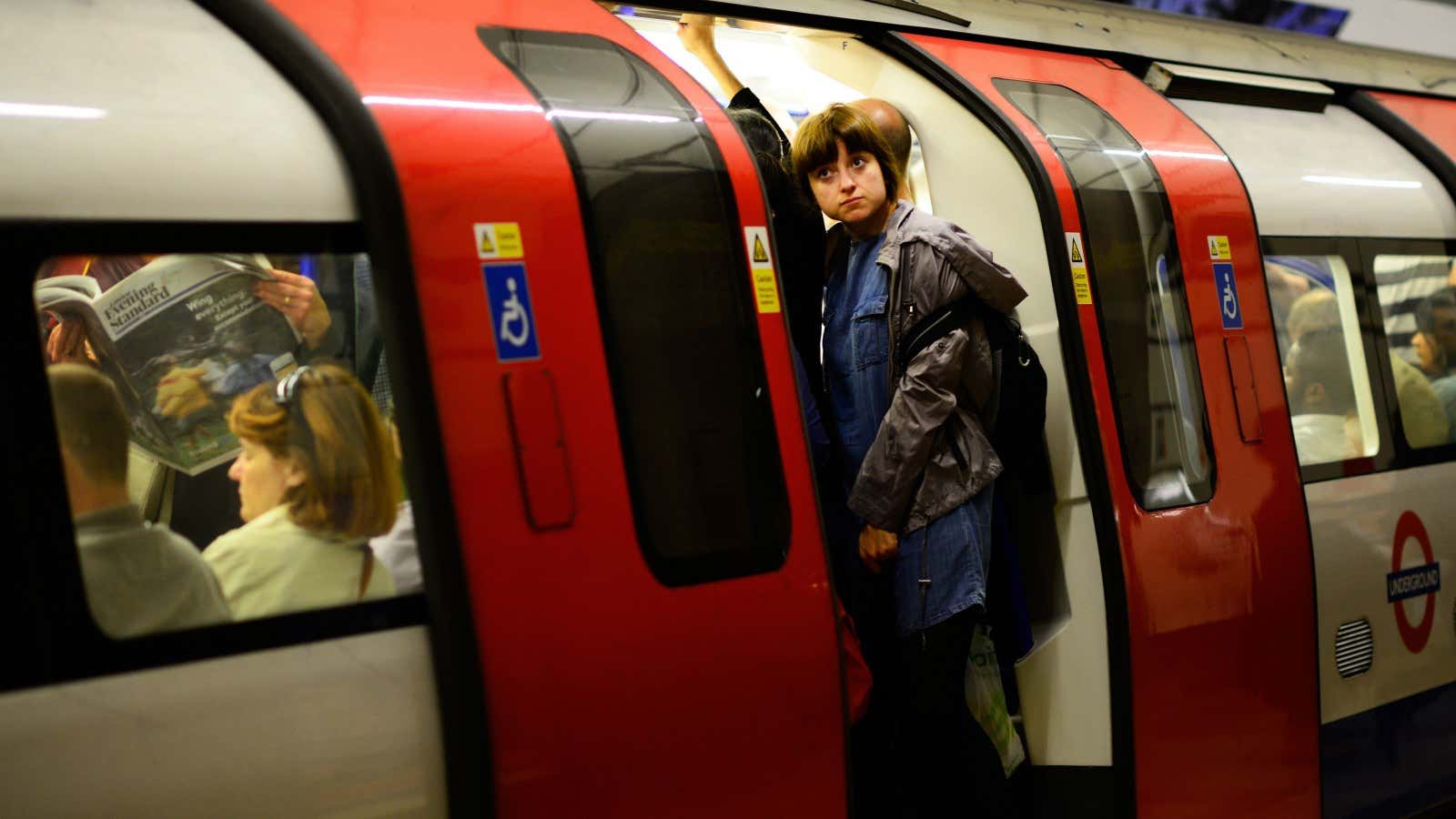Commuters pressed up against the sides of a London Underground carriage will know the constant jerking as trains alternate between the bursts of speed needed to get between stations and stopping, a process that means vast amounts of energy are lost. The Tube has now begun using technology that gathers that wasted power, and feeds it back into the matrix.
When a train brakes, the motors that drive it forward turn into generators that provide the power to stop the train, turning the kinetic energy of the train into electrical energy. What an ”inverter” does is allow energy to run back from the generators to the electrified rails, and thence back into the system.
The “inverter” technology was trialed at a substation called Cloudesley Road on the Victoria line (where train speeds top 800 meters, or 263 ft, per minute). Transport for London, which runs the Tube, said that each day it was used, a megawatt hour of energy was saved. That’s enough to power Holborn, one of the capital’s biggest stations, for two days a week—or more than 100 homes for a year.
If rolled out across the whole Tube network, the technology could save 5% of its total energy use, and a resultant £6 million ($9.2 million) a year.
The technology is already in place on part of the Paris tram system, and orders have been placed for units by the Milan and Riyadh metros, according to its manufacturer, Alstom.
“This state-of-the-art regenerative braking system has the potential to transform how we power stations across the TfL network, unlocking massive power savings and significantly reducing our energy bills,” said Chris Tong, London Underground’s head of power and cooling, in a press release.
TfL has said it’s committed to finding ways to save energy, including a low-carbon revamp of a power station from 1906 to power its systems.




